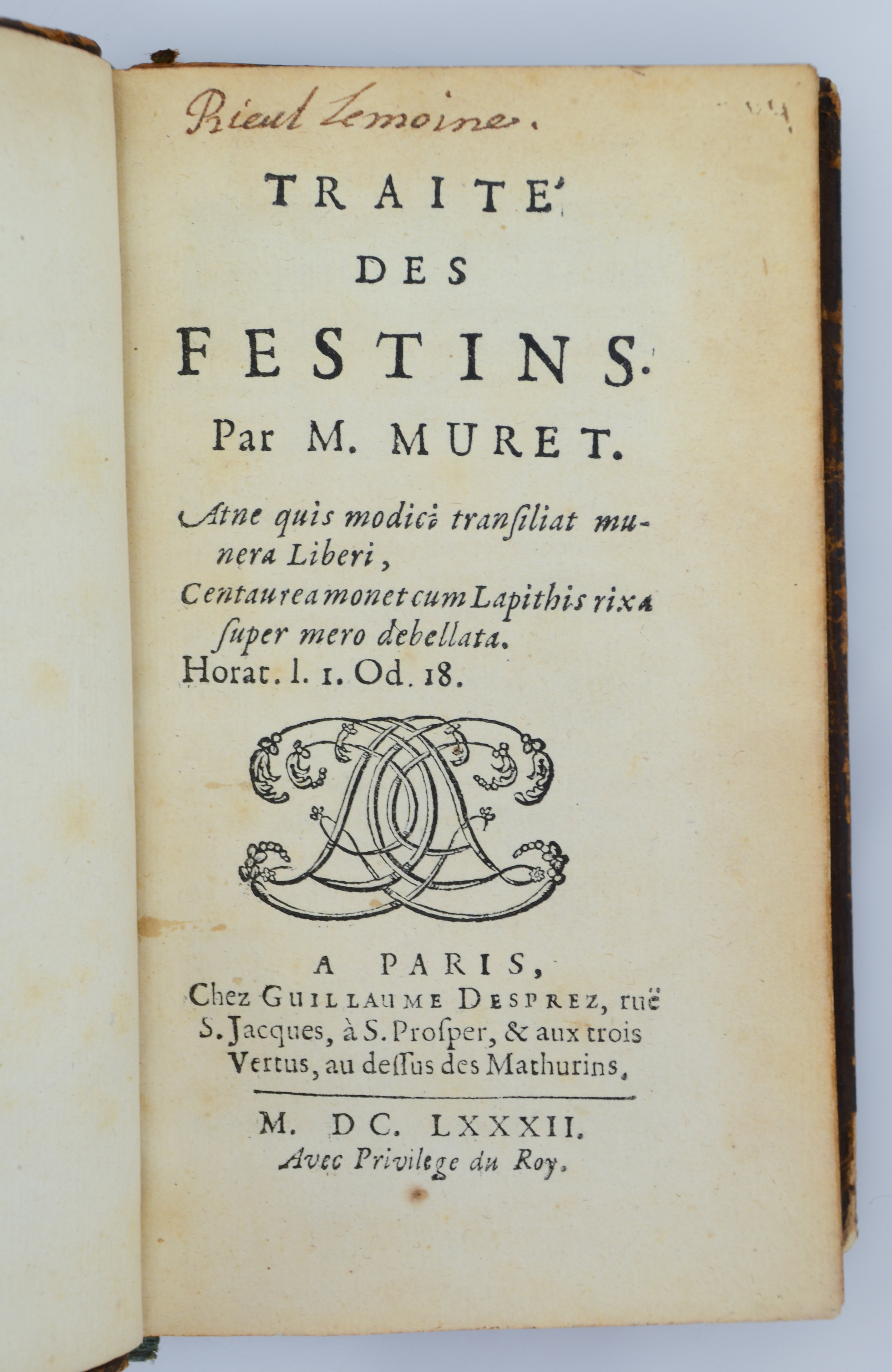To feast is human. It is nearly always, nearly everywhere the case. Gluts, whether caused by the slaughter of an animal, or by the harvest or some other windfall, are unavoidable, and those who possess the excess capitalize on it by sharing it in some way (surely this is the origin of capitalism). Feasts, therefore, tell us a great deal about a culture. How is food shared? When, where and by whom? How are the occasions for feasting marked? What is eaten? (Consider: the Greeks camped on the shores of Troy for a decade, yet Homer does not feed his heroes fish!) Nowadays, the anthropology and archaeology of feasting are fields of academic inquiry and debate, precisely because they yield such insight into a culture. Yet for much of the early history of printed books, this discussion was confined almost exclusively to Christian feasts, though “feast” is taken in its primary sense: a sacred rite, a metonym for a holiday. Enter Jean (probably) Muret:
Traité des Festins. Paris: Guillaume Desprez, 1682. First edition.
Like all good thinking minor nobility of the age of Louis XIV, Muret begins by defining his subject:
“Le Festin n’est autre chose qu’un assemblée de diverses personnes, qui sont invitées pour manger ensemble, & se divertir pendant le repas”
the Feast is nothing but a gathering of various people invited to eat together and to entertain one another during the meal (p. 1, A1r)
This may seem banal, but it is novel. Muret sees the feast as a phenomenon that links various kinds of human endeavor, and often the most significant. Although there is considerable attention given to Christian feasts — the entire last chapter, for example — Muret conceptualizes feasting as a category with wide application. He discusses feasts for births and weddings, military feasts, holy feasts, funerary feasts, coronation feasts and so forth. How do these differ? By holding these previously disparate sorts of “assemblées de diverses personnes” up against one another, he uncovers their common traits. The survey is typological but also chronological; it is larded (forgive the pun) with references to classical (mostly Roman) feasts; this gave rise to the title of its second manifestation in 1715 (Dissertation sur les festins des anciens Grecs et Romains…). How wise it is to see continuities in these rituals that might otherwise seem to be paragons of specificity.
For all this the book might be revolutionary enough, but it goes further. From these traverses across types of feast, Muret draws general precepts about feasting itself. There are sections on guest-lists and table-wares, but also on taking exercise before feasts (especially hunting; a nobleman’s adumbration of later anthropological theories of feasting vis à vis slaying a mammoth or a boar), and the all-important pre-feast bath. As such, this stands at the beginning of a vast category of literature — one that we often think of as beginning rather later — on the mores of entertaining and of hospitality more generally. What La Varenne did for the preparation of the food in the Cuisinier françois some thirty years earlier (1651), Muret did for the reciprocal end: consumption.
Collation:
Duodecimo (6” x 3 3/8”, 153mm x 86mm): binder’s blank, ā8 b2(–b2) A8 B4 C8 D4 … T8 V4 X6 Y2 (Y2 blank) [octavo $4, quarto $2; –ā1]. 137 leaves, pp. [18], 230, [24], 2 blanks.

